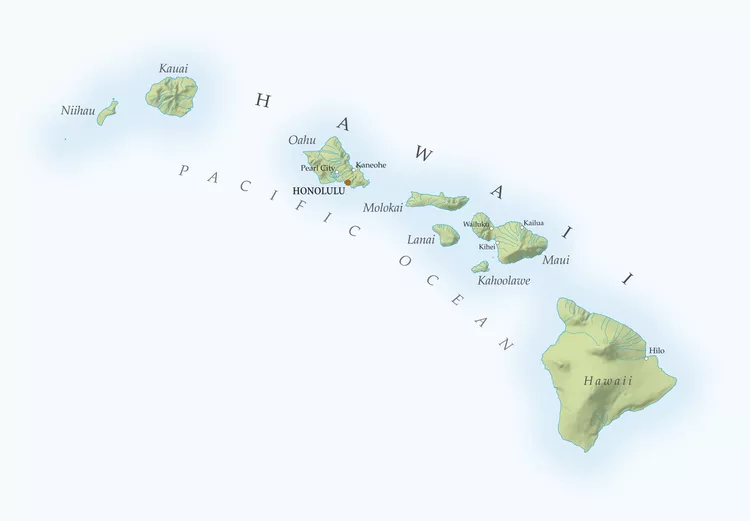Summary of Hawaii’s Unique Features
What makes Hawaii so unique? In this article, we will explore the geographic and geological marvels that set the Hawaiian Islands apart.
Island State
Hawaii is the only state in the U.S. that consists entirely of islands. The number of islands in Hawaiian Islands can vary depending on who you ask. There are eight main islands officially recognized: Hawaii Island (often called the Big Island), Kaho’olawe, Kaua’i, Lana’i, Maui, Moloka’i, Ni’ihau, and O’ahu. However, these islands are just a small fraction of a larger chain that includes more than 80 volcanoes and 132 islands, reefs, and shoals, collectively known as the Hawaiian Ridge.
The Hawaiian Ridge stretches over 1500 miles, stretching from the Big Island to Midway Island. All of these islands were formed by a hotspot in the Earth’s mantle, and as the Pacific Plate drifts west-northwest, older islands move away from this hotspot. Currently, the hotspot is beneath the Big Island, which was formed by five volcanoes: Kohala, Mauna Kea, Hualalai, Mauna Loa, and Kilauea, two of which remain active.
A new landmass, named Loihi, is currently forming about 15 miles off the southeast coast of the Big Island. Loihi has risen approximately 2 miles above the ocean floor and is expected to become an island in the next 30,000 to 40,000 years.
Most Isolated Land
The Hawaiian Islands are the most isolated populated land masses globally, situated nearly 2400 miles from California, 3800 miles from Japan, and 2400 miles from the Marquesas Islands, which are the origin of Hawaii’s first settlers around 300-400 AD. This geographical remoteness contributed to Hawaii being one of the last inhabited places on Earth.
Moreover, Hawaii was among the final locations “discovered” by explorers from the New World. The English explorer Captain James Cook first arrived in Hawaii in 1778. Due to its strategic location in the Pacific, Hawaii has attracted attention from various nations such as the Americans, British, Japanese, and Russians since Cook’s arrival. Once a kingdom, Hawaii was briefly governed as an independent nation before becoming a part of the United States.
Most Continuously Active Volcano
As mentioned earlier, the Hawaiian Islands are formed from volcanic activity. Among these, Kilauea Volcano, located on the Big Island within Hawaii Volcanoes National Park, has been erupting continuously since 1983, making it one of the most active volcanoes in the world. Prior to that, Kilauea erupted 34 times since 1952 and had other documented eruptions from 1750 onward.
Formed between 300,000-600,000 years ago, Kilauea has remained active throughout its existence, with no significant periods of dormancy recorded. If you take the opportunity to visit the Big Island of Hawaii, you may witness the awe-inspiring process of nature in its most primitive form.





